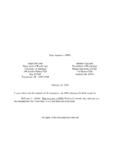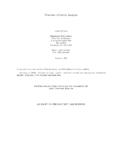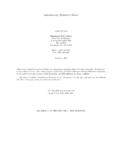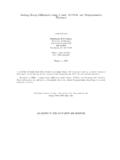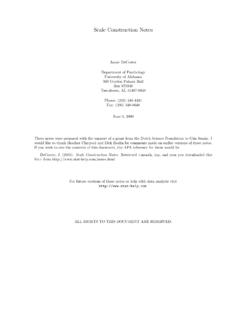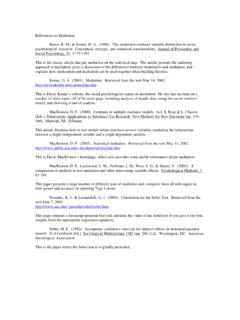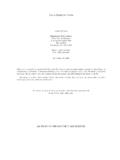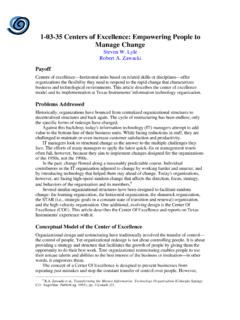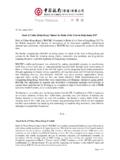Transcription of Transforming and Restructuring Data - Stat …
1 Transforming and Restructuring data Jamie DeCoster Department of Psychology University of Alabama 348 Gordon Palmer Hall Box 870348. Tuscaloosa, AL 35487-0348. Phone: (205) 348-4431. Fax: (205) 348-8648. May 14, 2001. These notes were prepared with the support of a grant from the Dutch Science Foundation. I would like to thank Heather Claypool and Lynda Mae for comments made on earlier versions of these notes. If you wish to cite the contents of this document, the APA reference for them would be DeCoster, J. (2001).
2 Transforming and Restructuring data . Retrieved <month, day, and year you downloaded this le> from For future versions of these notes or help with data analysis visit ALL RIGHTS TO THIS DOCUMENT ARE RESERVED. Contents 1 Introduction 1. 2 Transformations: Calculating New Values from Existing Variables 6. 3 Normalizing data 10. 4 Working with Conditionals (if statements) 15. 5 Working with Arrays and Loops 20. 6 Restructuring data : Changing the Unit of Analysis 28. i Chapter 1. Introduction Overview Often times the initial form of your data is not the way you want it for analysis.
3 The reasons for this could be many. For example, A researcher might choose to have data entered in a format that is easy for typists (to reduce data -entry errors) but which di ers from the form needed for analysis. An experiment may have been administered by a computer program that is forced to record the data on a trial-by-trial basis when the participant is the desired unit of analysis. The residuals of an ANOVA might be observed to have a severe skew. This is problematic because ANOVAs assume that the residuals have a normal distribution.
4 Correcting this often involves Transforming the response variable. A particular way of looking at the data is not apparent until after analysis has already begun and the data have been loaded into the statistics program in a format incompatible with the new analysis. These notes attempt to explain the circumstances under which you would manipulate your data and provide a number of tools and techniques to make manipulation easier and more e cient. Three tools that are particularly important are conditional statements, loops, and arrays.
5 Conditional statements, explained in chapter 4, allow you to apply categorical transformations. This includes both transformations of a categorical variable as well as applying di erent transfor- mations to a numeric variable based on a categorical distinction. Loops and arrays, explained in chapter 5, provide you with a means of performing large numbers of similar transformations using a relatively small section of written code. The great majority of people performing statistical analysis do so using either SPSS or SAS.
6 These notes will therefore always follow the introduction of a particular method of data manipulation with speci c instructions on how to implement it in both of these software packages. In the main body of each chapter we will use pseudocode (generic programming statements not speci cally applicable to either program). data and data Sets The information that you collect from an experiment, survey, or archival source is referred to as your data . Most generally, data can be de ned as list of numerical and/or categorical values possessing meaningful relationships.
7 1. For analysts to do anything with a group of data they must rst translate it into a data set. A data set is a representation of data , de ning a set of variables that are measured on a set of cases.. A variable is simply a feature of an object that can categorized or measured by a number. A. variable takes on di erent values to re ect the particular nature of the object being observed. The values that a variable takes will vary when measurements are made on di erent objects at di erent times. A data set will typically contain measurements on several di erent variables.
8 Each time that we record information about an object we create a case. Like variables, a data set will typically contain multiple cases. The cases should all be derived from observations of the same type of object with each case representing a di erent example of that type. Cases are also sometimes referred to as observations. The object type that de nes your cases is called your unit of analysis. Sometimes the unit of analysis in a data set will be very small and speci c, such as the individual responses on a questionnaire.
9 Sometimes it will be very large, such as companies or nations. When describing a data set you should always provide de nitions for your variables and the unit of analysis. You typically would not list the speci c cases, although you might describe their general characteristics. Many di erent data sets can be constructed from the same data . Di erent data sets could contain di erent variables and possibly even di erent cases. For example, a researcher gives a survey to four di erent people (John, Vicki, James, and Heather).
10 Asking them how they felt about dogs, cats, and birds. The survey showed that John likes dogs, but is neutral towards cats and birds. Vicki dislikes dogs, but likes cats and birds. James is neutral towards dogs, but dislikes cats and birds. Heather dislikes dogs, likes cats, and is neutral towards birds. From this data the researcher could construct the data set presented in table When displaying a data set in tabular format we generally put each case in a separate row and each variable in a separate column. The entry in a given cell of the table represents the value of the variable in that column for the case in that row.
